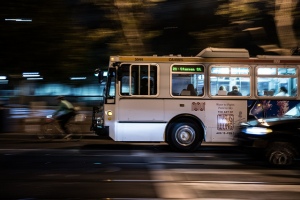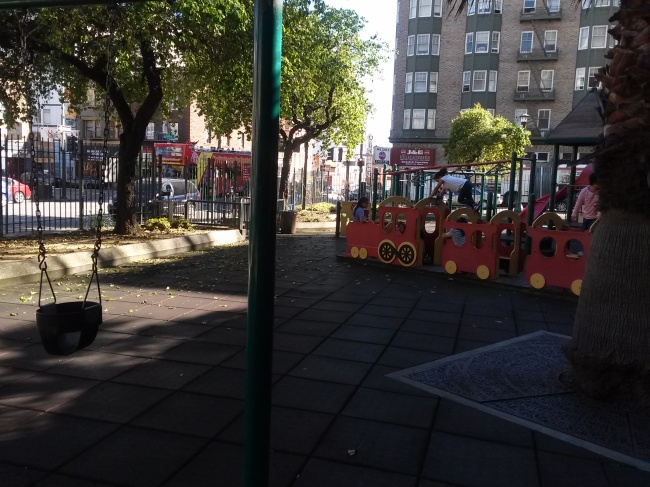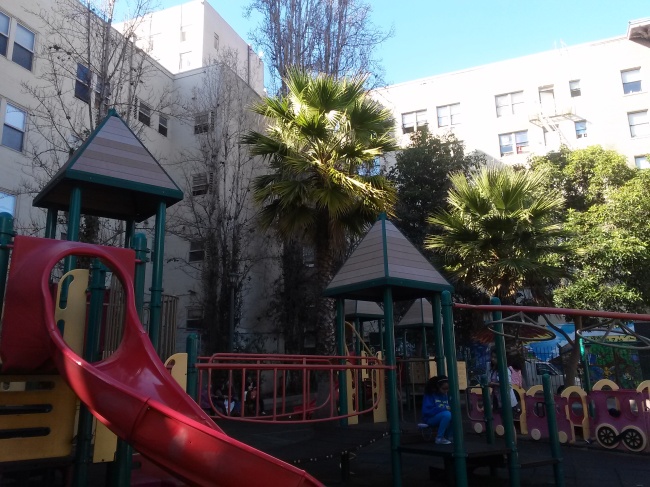Ever since Twitter relocated to its new space on Market Street in 2012, cranes have sprung up on the horizon and new construction has dotted Market Street and the surrounding areas – except in the Tenderloin district, mid-Market Street’s neighbor.
The mid-Market area has housed a tech boom that brought young professionals from all over the state to San Francisco to work. To accommodate these workers, the city has allotted a certain amount of housing and reconstruction I n the area to brighten the street up for the new folks.
Market Street is cleaner than ever and steadily getting cleaner, with multiple cleanup efforts, new buildings, and a steady influx of business. But if a casual wanderer steps over two blocks, they land in the Tenderloin, one of the city’s most low-income areas. It has been virtually untouched by the city’s cleaning efforts on Market. With the tax breaks that the companies get from the city, should big tech names be obligated to give back to the communities that they move into?
“They definitely need to be involved,” says Stacy Schasht, a Department of Public Works street cleaner. She works in the Tenderloin several days a week and watched the tech companies move in. “Get some of their employees out on the street and picking up. Companies should put some money into it. Why not give back a little of what they’re taking?”
Some companies are making an effort to relieve the city of their street cleaning expenditures in the neighborhoods that they touched down in. Yammer, a social networking business, has organized community service days where its workers go out into the Tenderloin, armed with tongs, brooms, and garbage bags.
According to the Community Benefit Agreement between Yammer and the City of San Francisco, the company sponsored a company-wide day of giving on April 12. 80% of in-town employees participated and the document quotes ‘over 200’ employees volunteering at 13 organizations. The company has agreed to perform two “Days of Good” in the community.
Twitter has a similar community benefits agreement with the city in which it also has agreed to two days of community service. The contract states that employees will be compensated for their time cleaning. Twitter has not performed any of its community service yet and was not available for comment.
The Tenderloin’s hygiene and street cleanliness has been an issue for tech companies, and not all of them are interested in giving back. Employees from various organizations have vocalized their concerns with the area’s so-called “area for degenerates”. Greg Gopman, the CEO of AngelHack, made an impression early in 2013 in a post on Facebook.
“In downtown SF the degenerates gather like hyenas, spit, urinate, taunt you, sell drugs, get rowdy, they act like they own the center of the city. Like it’s their place of leisure… In actuality it’s the business district for one of the wealthiest cities in the USA,” writes Gopman.
“You can preach compassion, equality, and be the biggest lover in the world, but there is an area of town for degenerates and an area of town for the working class. There is nothing positive gained from having them so close to us. It’s a burden and a liability having them so close to us.”
He later apologized for his actions, but the post went viral and brought to light the tensions between the underprivileged parts of the city and this new, shining tech population. Since Gopman’s post, much of the homelessness on Market Street has been shifted to the Tenderloin by Civic Center cleaning crews and police enforcement.
The Tenderloin has seen massive street cleaning efforts in the past twenty years, but very few infrastructure renovations – certainly none on the level of what the city is seeing on Market Street. According to San Francisco Police Department reports, crime rate has not dropped significantly and there have been no new recent strategies to tackle the drug use.
Phillip Allen, 52, works with outreach services in the Tenderloin and has been in San Francisco for over 30 years. He says he sees a lot of street cleaning efforts come and go, but the tech companies have started something new. “The fact is, I’ve never seen anything like what they’re doing to Market Street, and I’ve been wondering where they got the money from,” says Allen.
“There’s a hygiene problem in the major downtown area as a whole – the number one hygiene problem we have is restrooms for being human beings. I’ve never seen the city like this, being picked up and cleaned like this, but still not enough bathrooms.”
“If tourism is such a big industry, and if so many people are moving in, why don’t we have clean streets in the Tenderloin?” says Rudy McKnight, 52, a baker. “We need public bathrooms, public parks. Make it user-friendly. It’s ridiculous that there should be shit on the streets. Our dignity is compromised when we don’t allow for cleanliness.”
The SF Parks Alliance is a group that works to remove graffiti, do waste removal, and beautify the city’s greenery. According to SF Parks Alliance spokeswoman Julia Brashares, the organization has “two Park Partner groups that do work in the Tenderloin – one of those community groups has been instrumental in getting Boeddeker Park renovated and improved.”
She states that upkeep of the Tenderloin takes up a significant part of their job and that it could not be done without the volunteer effort they receive.
“If tech companies are displacing people, they should help pay for the clean up,” says James, 30, a DPW street cleaner. “It’s not entirely their responsibility. But you see a lot of rich people coming into this community. The rich people aren’t here for the community, they’re just here for the tourist spots.”
James says he’s seen a lot of people come and go and doesn’t think it’s fair that Market has been updated and the Tenderloin is still lacking basic human needs.
“People need somewhere to go, something to do. They shouldn’t have to just sit in their single room occupancy hotels and die. We need more toilets for homeless people. It’s not enough.”
SIDEBAR:
Eco-toilets for the Tenderloin
There is a human waste problem on the streets of the Tenderloin and an ecologically-friendly way to tackle it.
The PPlanter is a toilet/garden designed by the Hyphae Lab, the same folks responsible for the Tenderloin National Forest on Leavenworth Street. It features a short, stout, fashionable public toilet with growing plants on top, which are fertilized by the waste that the toilet filters. The top half of the toilets are see-through to discourage drug use, according to Hyphae Lab’s design.
According to results from the $180,000 test-run in 2012, there was little to no smell. The model that the city ordered will be outfitted with two urinals and a composting toilet.
According to Hyphae Lab’s master plan for the project, Glide Church alone spends $17,000 a year on labor and parts costs to fix broken toilet and sinks. They also spend around $3,000 a year fixing outside doors corroded from public urination. The PPlanter project will install several toilets along busy streets in the Tenderloin later this year.



